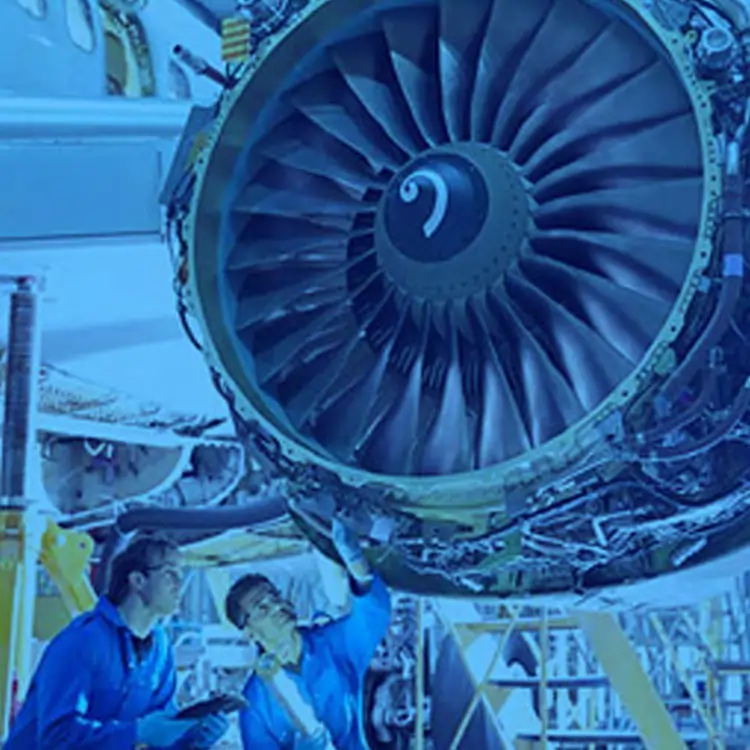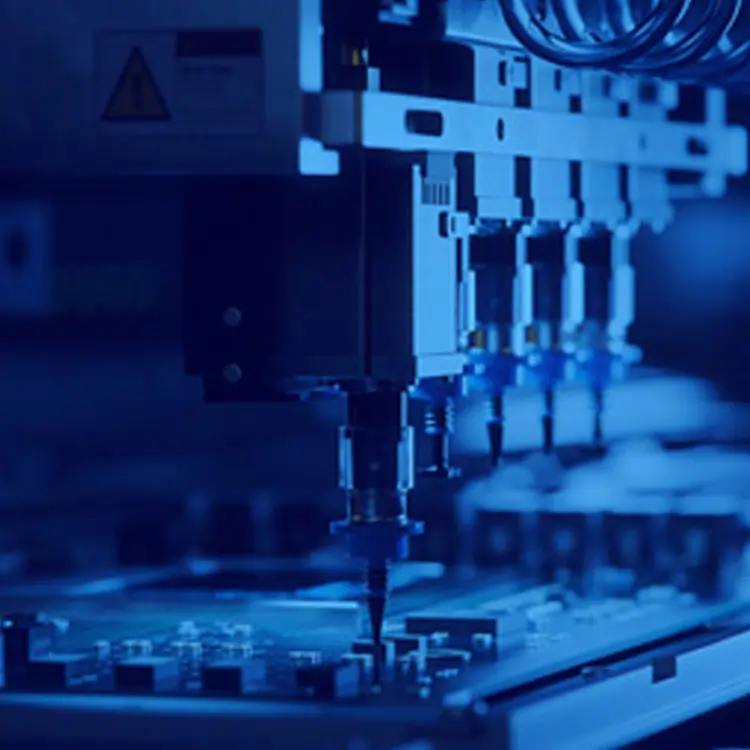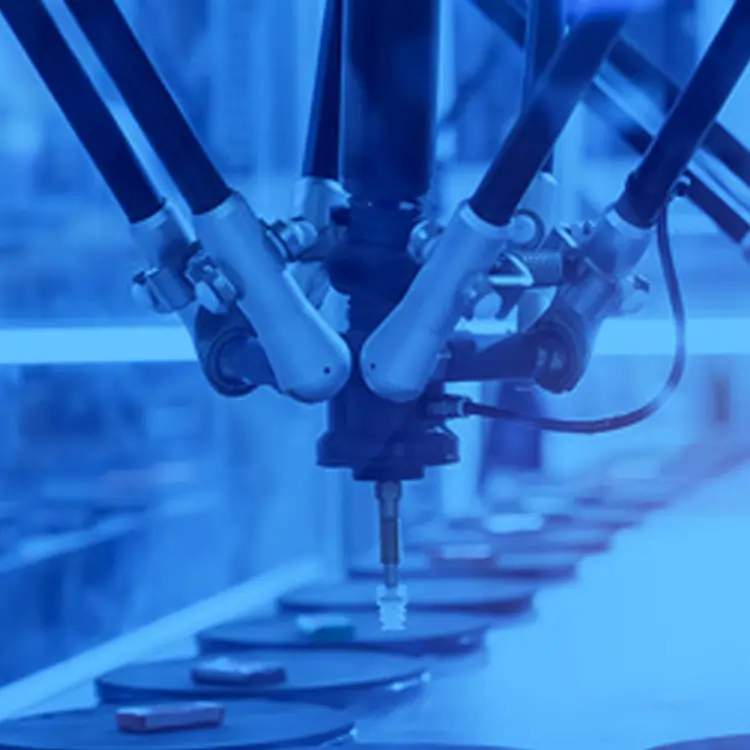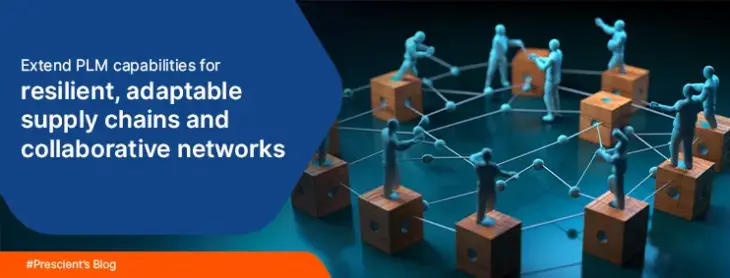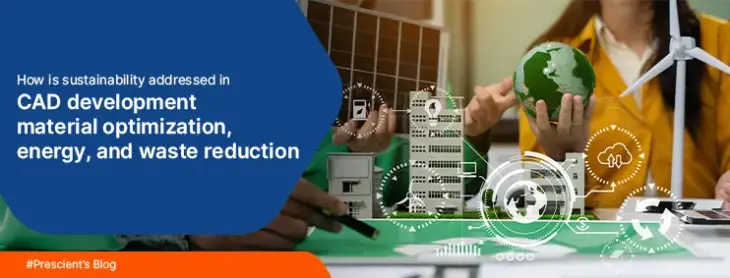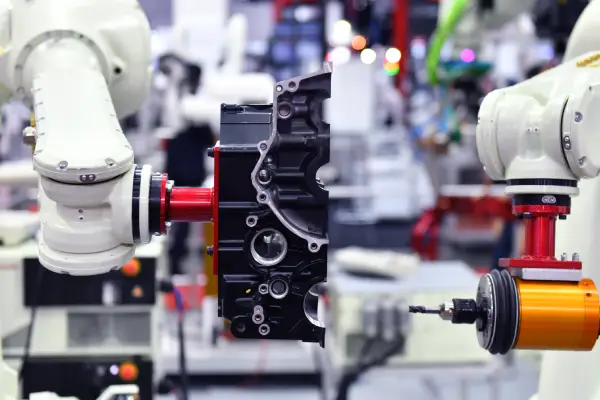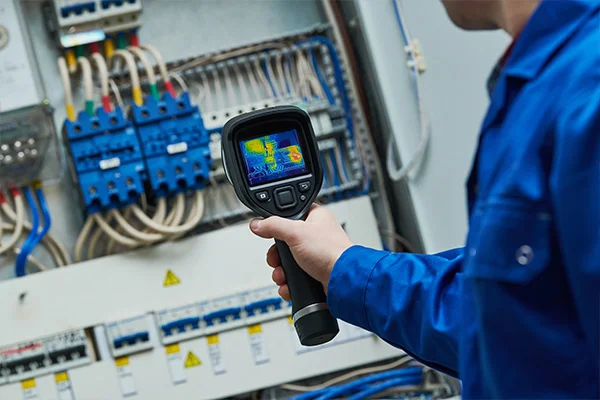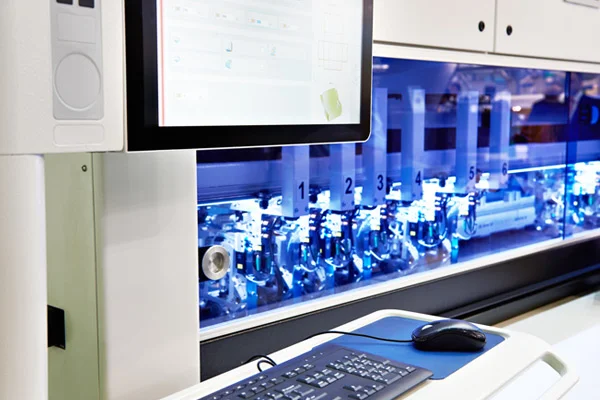Vision Based Inspection
The Power of Vision-Based Solutions in Manufacturing by Prescient Technologies
Features Of The EMIS
Features Of The EMIS

Web-based Platform
Our Digital Logbook is accessible anytime, anywhere. Whether you prefer on- premises or cloud deployment, our platform provides the flexibility to suitHighlighting how Digital Thread saves time and resources by eliminating manual data entry and transfer, allowing employees to focus on more value-added tasks your specific needs.

Customizable Checklists
Tailor your checklists to fit your unique requirements. With our platform, you can easily create and configure checklists, define the order of checklist items, and provide additional instructions for each step.
Benefits of EMIS
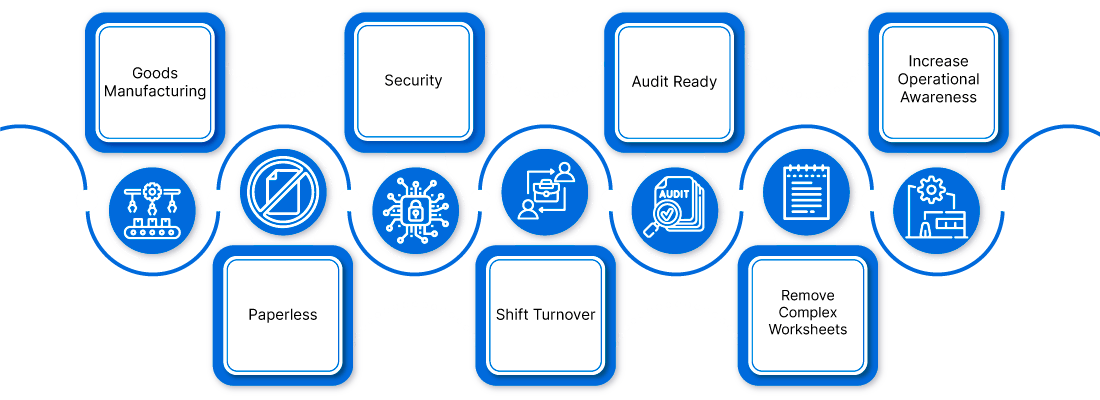
Digital Logbook Operation Rules
Functional Administrator
- Defines production lines and workshops
- Defines systems users and roles
- Configures different masters and checklists
Operator
- Views schedule
- Files checklist
- Views filled checklist
Line Incharge
- Approves filled check by operator
- Files checklist for production lines
- Monitors summary and reports
- Defines checklist-schedule for workstations
Process Incharge
- Configures different masters and checklist.
- Defines checklist-schedules.
- Files checklist for plant if applicable.
- Monitors reports and expectations from filled checklist.
Digital Logbook Implementation
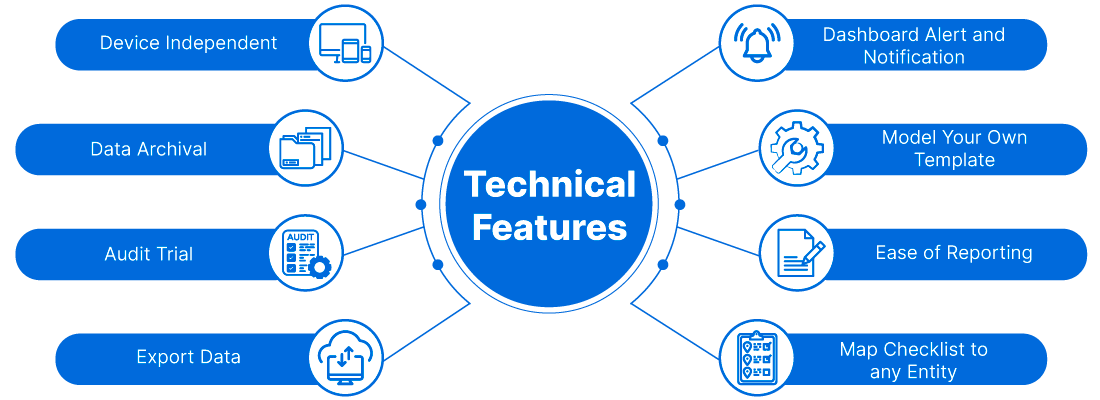
EMIS Implementation

Our Services
Our Services

Part Segregation
Utilise our Intelligent Sensing Technology Platform for precise part segregation. Employ advanced sensors such as CCTV, Laser Scanners, GPS, BLE, and UWB. Achieve streamlined operations, reduced waste, and enhanced quality control.

Defect Detection
Leverage our Intelligent Sensing Technology Platform for reliable defect detection. Utilise advanced sensors and real-time data analysis for accurate results. Prevent costly product recalls, reduce rework, and improve customer satisfaction.

End of Line Inspection
Ensure the highest quality standards with our comprehensive end of line inspection. Integrate our Intelligent Sensing Technology Platform for meticulous examination. Verify critical parameters, identify anomalies, and ensure regulatory compliance.

Dimension Inspection
Optimise 3D printing processes with our in-situ inspection services. Monitor and control the printing process in real-time using advanced sensors. Detect errors early, minimize material waste, and accelerate time-to-market.

Request a Quote Today
Schedule Free Consultation Today
Our Intelligent Sensing Technology Platform
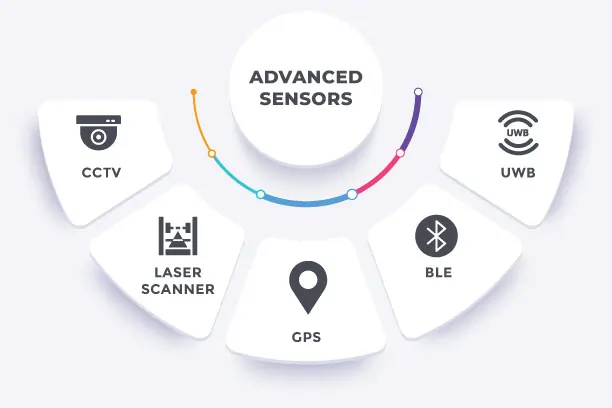
Developed by Prescient Technologies to unleash the full potential of vision based inspection
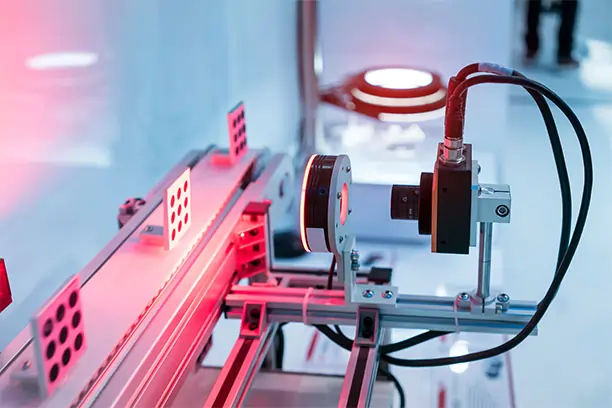
Integrates advanced sensors like CCTV, Laser Scanners, GPS, BLE, and UWB

Enables real-time data collection, high accuracy, and scalable solutions
Vision Based Inspection in Different Industries
Manufacturing
Finds surface defects, assembly errors, and misaligned parts.
Electronics
Inspects circuit boards, solder joints, and semiconductor wafers.
Automotive
Detects paint flaws, scratches, and structural issues.
Pharmaceuticals
Checks packaging, labels, and tablet quality.
Why Choose
Prescient Technologies?
-
Expertise in Engineering Process Automation
-
Successful Implementations
-
Seamless Integration and Support
-
Measurable Results

Why Choose Prescient Technologies?

Expertise and Experience
With years of industry expertise, we have a deep understanding of energy management challenges and solutions.
Cutting-Edge Technology
Our EMIS leverages the latest advancements in data analytics, machine learning, and IoT technologies to deliver optimal results.
Customized Solutions
We tailor our EMIS to fit your organization's unique requirements, ensuring a solution that aligns perfectly with your goals.
Dedicated Support
Our team is committed to your success. From implementation to ongoing support, we provide personalized assistance every step of the way.
Why Choose
Prescient Technologies

Expertise In Engineering Process Automation
Ladies she basket season age her uneasy saw. Discourse unwilling am no described dejection incommode no listening of. Before nature his parish boy.
Cyber Securitya Successful Implementations
Ladies she basket season age her uneasy saw. Discourse unwilling am no described dejection incommode no listening of. Before nature his parish boy.
Seamless Integration And Support
Ladies she basket season age her uneasy saw. Discourse unwilling am no described dejection incommode no listening of. Before nature his parish boy.
Measurable Results
Ladies she basket season age her uneasy saw. Discourse unwilling am no described dejection incommode no listening of. Before nature his parish boy.
Why Choose Prescient Technologies?
Expertise and cutting-edge technology for superior inspection services.
Elevate your quality control processes, boost productivity, and ensure customer satisfaction.
Our EMIS leverages the latest advancements in data analytics, machine learning, and IoT technologies to deliver optimal results.
Proven track record of successful projects and satisfied clients.
We tailor our EMIS to fit your organization’s unique requirements, ensuring a solution that aligns perfectly with your goals.
Vision-based inspection solutions that enhance efficiency and ensure superior product quality while reducing costs.
We tailor our EMIS to fit your organization’s unique requirements, ensuring a solution that aligns perfectly with your goals.
Dedicated Support
Our team is committed to your success. From implementation to ongoing support, we provide personalized assistance every step of the way.
What is vision based inspection ?
vision based inspection refers to the process of conducting thorough assessments and examinations in industrial settings to ensure quality control, detect defects, and maintain compliance with industry standards.
Why is vision based inspection important?
vision based inspection is crucial for identifying and addressing potential issues early in the production cycle, ensuring the delivery of high-quality products, minimizing rework, reducing waste, and enhancing customer satisfaction.
What types of services does Prescient Technologies offer for Industry Inspection?
Prescient Technologies provides a range of services, including part segregation, defect detection, end of line inspection, and in-situ inspection for 3D printing processes, all powered by our Intelligent Sensing Technology Platform.
What is the Intelligent Sensing Technology Platform?
The Intelligent Sensing Technology Platform developed by Prescient Technologies integrates advanced sensors such as CCTV, Laser Scanners, GPS, BLE, and UWB to collect real-time data and enable precise inspection in industrial settings.
How does part segregation benefit industrial processes?
Part segregation ensures the proper separation and categorization of components, minimizing errors and improving efficiency in manufacturing, assembly, and quality control processes.
How does defect detection contribute to quality control?
Defect detection allows for the identification and elimination of product imperfections, ensuring that only high-quality items are delivered to customers, reducing the risk of recalls and enhancing brand reputation.
What are the advantages of end of line inspection?
End of line inspection provides a final quality check before products are released to the market, minimizing the risk of delivering faulty items, maintaining compliance with regulations, and safeguarding customer satisfaction.
How does in-situ inspection benefit 3D printing processes?
In-situ inspection for 3D printing enables real-time monitoring and control, ensuring the quality and integrity of printed objects, reducing material waste, and accelerating the time-to-market for innovative products.
Which industries can benefit from Prescient Technologies' Industry Inspection services?
Prescient Technologies serves a wide range of industries, including automotive, aerospace, electronics, manufacturing, and more, tailoring inspection solutions to meet the specific needs of each sector.
How can I get started with Prescient Technologies for Industry Inspection services?
To get started, simply reach out to our team by contacting us via phone or email. We'll be happy to discuss your specific requirements, provide personalized solutions, and guide you through the process.
POPULAR NEWS
Featured Posts
- October 19 2025
- systemadmin
Extend PLM capabilities for resilient, adaptable supply chains and collaborative networks
Have you ever had to halt production because a critical supplier failed to deliver on time? Many manufacturers struggle with broken links in the supply chain, especially when their digital tools can’t adapt fast enough. In today’s uncertain environment, it’s no longer enough to have a Product Lifecycle Management (PLM) system that just tracks internal workflows. You need one that connects, adapts, and responds across your entire supply network. This is where PLM customization helps. It extends the core capabilities of your PLM system to create resilient, adaptable supply chains and collaborative ecosystems across suppliers, design teams, and manufacturing partners. Why Standard PLM Isn’t Enough for Modern Supply Chains Traditional PLM systems are mostly built to serve internal engineering teams. They focus on managing product data, revisions, and approvals. But supply chains today involve global partners, suppliers, and external contributors. Static systems can’t handle this complexity. PLM needs to evolve from being a data repository to becoming a connected collaboration backbone. That transformation begins with customisation. How PLM Customization Supports Supply Chain Resilience 1. Design for Disruption Disruptions be it a pandemic, conflict, or material shortage can break traditional supply chains. Companies with custom PLM workflows can build alternative sourcing models and simulate supply risks before they cause damage. A customised PLM system can: According to Wired (2023), 75% of manufacturers plan to invest in digital resilience tools after recent global supply chain shocks. 2. Real-Time Supplier Collaboration Your suppliers shouldn’t be left out of your product lifecycle. A customised PLM platform can offer secure access to selected data, letting vendors contribute at earlier stages of design and manufacturing. Key features include: With PLM supplier collaboration, you reduce cycle time and improve component quality before a part reaches production. 3. Faster Workflows with Automation Manual approvals and data updates often cause delays. PLM workflow automation streamlines repetitive tasks by automatically routing files, notifying users, and logging changes. Common use cases include: This level of automation brings greater control and reduces human error. TechVersions reports that PLM automation can cut product development time by up to 35% (2024). Connecting the Digital Thread Beyond the Organisation The digital thread is the flow of data that connects every stage of your product lifecycle. PLM is a core part of this, but without customization, the thread often breaks when external partners come into play. PLM customization helps by: By building an extended thread, you ensure that everyone internal or external is working from the same up-to-date product data. Why Adaptability Needs to Be Built Into PLM Resilience is not just about reacting to crises it’s about adapting quickly. An adaptable PLM system allows you to: This flexibility makes it easier to meet customer demands, enter new markets, and respond to emerging challenges without rebuilding your system from scratch. Signs You Should Extend Your PLM Capabilities You might need PLM customization if: These issues become business risks as supply chains get more complex. A generic PLM setup cannot handle such variability. A customised one can. What Prescient Technologies Offers Prescient Technologies helps manufacturers build smarter PLM environments that go beyond engineering silos. We specialise in: Our team has delivered custom PLM solutions for leading global manufacturers across industries, making their product and supply data more connected, secure, and adaptable. Key Takeaways Ready to Extend Your PLM Capabilities? If your organisation is looking to improve product visibility, strengthen supplier networks, and build more adaptable operations, it’s time to extend your PLM system. 👉 Talk to Prescient Technologies about how PLM customization can make your supply chain more resilient, collaborative, and future-ready.Contact us to get started.
Read More- October 14 2025
- systemadmin
How Sustainability Is Shaping CAD Software Development for Material Optimization, Energy Use, and Waste Reduction
Can Your CAD Tools Keep Up with Climate Demands? Manufacturers around the world are under pressure to reduce carbon emissions, minimise waste, and develop energy-efficient products. But there’s one question every engineering team should ask is your CAD software helping or holding you back from meeting your sustainability goals? As product lifecycles grow more complex and regulations tighten, traditional design workflows no longer suffice. Today, CAD software development plays a critical role in embedding sustainability from the earliest stages of design. It’s not just about creating shapes it’s about making smarter, lighter, and more responsible products. Let’s explore how CAD tools are being transformed to support material optimisation, reduce energy consumption, and minimise waste across the product development cycle. Traditional CAD Workflows Don’t Prioritise Environmental Impact For years, CAD software development focused on improving design accuracy and accelerating time-to-market. But sustainability was rarely a core concern. That’s changing. Here are key challenges with older CAD systems: According to a 2024 study by Lucent Innovation, nearly 45% of manufacturers now say their design tools must directly support energy efficiency and material reduction. Yet many still rely on outdated CAD kernels that are not optimised for environmental metrics. The Hidden Cost of Design Choices When sustainability is left out of early design, manufacturers face: A poorly optimised CAD model may look perfect on screen but lead to real-world waste. Every gram of material saved in a digital model could translate to tons of raw resource savings in mass production. Every kilowatt avoided during machining reduces your carbon footprint. So why not let CAD software development do the heavy lifting? Sustainable CAD Software Development Modern CAD platforms are evolving. They now come with tools that support sustainable engineering practices from the geometry core to energy-aware design features. 🔹 1. Material-Saving Design in CAD Prescient Technologies integrates geometric modeling and CAD kernels that prioritise structural strength with minimal material usage. This is not just efficient it’s sustainable. 🔹 2. Energy-Efficient CAD Modeling According to Wired, design-led manufacturing improvements can reduce energy use by up to 25% per product. 🔹 3. Waste Reduction with Smart Assemblies Through CAD automation, teams can build models that are easy to update and maintain, reducing digital and physical waste. Key Enablers Driving Sustainability in CAD Cloud-Based CAD Platforms They enable real-time collaboration and reduce hardware energy loads. AI in CAD Software Development AI recommends eco-friendly materials and flags unsustainable geometry. Integration with PLM and Simulation Tools Bridges the gap between product design and lifecycle management. Digital Twins Mirror physical assets for testing performance without building wasteful prototypes. Prescient’s experience in CAD software development and integration makes all of this possible in a single ecosystem tailored for manufacturing companies. What Makes Prescient Technologies Different? Prescient has delivered CAD tools and custom geometric modeling solutions for over two decades. The company blends deep domain expertise with CAD automation and AI-assisted optimisation to help clients reduce their design footprint. Key offerings include: These tools are built not just for performance but for the planet. Conclusion: Key Takeaways Looking to Build Sustainable Products from the Start? Contact Prescient Technologies to learn how our CAD Software Development services and automation tools can help your team reduce material use, energy costs, and waste right from the design stage. Let’s build smarter, greener products together. Explore our CAD offerings today – including geometric modeling, CAD kernels, and design automation.
Read More- September 21 2025
- Pankaj Singh
Why Teamcenter Implementation Matters Today
In the rapidly evolving manufacturing and engineering environment, executing a proper Teamcenter implementation can mean the difference between fragmented data silos and seamless, collaborative workflows. As product complexity rises, companies must unify CAD, BOM, change management, and systems like ERP. A well-executed Teamcenter implementation becomes the backbone of innovation, enabling higher quality, faster time to market, and better control over the product lifecycle. This guide walks through the practical blueprint from greenfield planning to a stable go-live, with best practices and real-world insight for engineering leads, IT heads, and PLM champions. Setting the Stage: Planning Your Teamcenter Implementation Define Clear Objectives & Use Cases Begin by documenting the business challenges you intend to solve with Teamcenter. Do you want to: Clear objectives enable you to prioritize modules and keep implementation scope manageable. Secure Leadership Sponsorship & Governance Any PLM project risks stalling without visible executive support. Ensure your steering committee includes department heads from engineering, manufacturing, IT, and quality. Establish decision authorities, escalation paths, and success metrics. Conduct Current State Assessment & Gap Analysis Map existing tools, manual processes, spreadsheets, and data models. Capture how file sharing, CAD vaulting, BOM reconciliation, and change approvals currently operate. This “as-is” map allows you to spot gaps and target what to address in your Teamcenter implementation. Define Go-Live Scope (MVP Approach) Resist the temptation to deploy every feature at once. Define your MVP (minimum viable product) — e.g. CAD integration + revision control + change management for one product line. Defer optional modules (supplier portal, advanced analytics) for future releases. Architecture, Environment & Integration Planning Decide whether you will host on-premises, cloud, or hybrid. Plan server sizing, database architecture, network bandwidth, and disaster recovery.Also design integration touchpoints: CAD systems (e.g. NX, Creo, SolidWorks), ERP, MES, and other enterprise systems. Map data flow, API or middleware layers, and designate where transformations or validations occur. Design & Configuration Phase: Building Your Core System Data Model & Naming Conventions Create a robust data model: item, revision, dataset, classification, attributes, and relationships. Define standardized attribute templates and naming rules. This becomes the foundation of consistency across your Teamcenter implementation. Workflow & Process Definition Design your change process: CR (Change Request) → CA (Change Action) → ECO (Engineering Change Order). Include approval loops, notifications, escalation rules, and integration with change history. Before automating, validate process logic with domain experts. Role-Based Access & UI Configuration Configure roles, privileges, and UI views. Each user group (design, manufacturing, QA, procurement) should see a tailored interface. This ensures usability and reduces load on average users. Integration & Customization Develop connectors, web services, or scripts for data exchange with ERP, CAD, or PLM-adjacent tools. Use configuration first; minimize heavy customizations. Too much customization increases maintenance burden and upgrade risk. Expertia+1 Data Migration & Cleansing Legacy data migration is often underestimated. Clean duplicates, correct attribute inconsistencies, remove obsolete records. Transform data to match your new model, then load it in test environments. Validate integrity. cmscomputer.in+1 Prototype & User Validation Run pilot examples or sample projects to validate design choices. Let key users test workflows early, capture feedback, and iterate before finalizing configuration. Security & Performance Checks Set up authentication, role validation, encryption, and audit trails. Conduct load & stress tests to simulate real user usage. If using cloud (e.g. Teamcenter X), leverage built-in security best practices. Siemens Blog Network Testing, Pilots & Training Phase Functional & Integration Testing Validate each module in isolation (change, BOM, document management). Then run full flows involving CAD to BOM to ERP sync. Confirm data consistency and transaction integrity. User Acceptance Testing (UAT) Select superusers or domain leads from each discipline to execute real scenarios. Collect defects, iterate, and revalidate. This gives confidence before full go-live. Pilot Go-Live Deploy to a controlled product line or department. Monitor usage, gather real feedback, and fix issues before scaling. This pilot acts as a final rehearsal for full rollout. Training & Documentation Provide role-based training — classroom, hands-on labs, quick reference guides. Create knowledge bases for users (FAQs, videos, how-to). Change management must be active: communicate benefits, collect feedback, reward adoption. Go-Live, Stabilization & Continuous Improvement Final Cutover & Production Launch Freeze legacy systems, perform delta data migration, and move to production. Ensure that backup and rollback plans are ready. Hypercare & Support Desk Maintain a dedicated support team post go-live. Track bugs, issues, user requests, and system performance. Provide quick resolution to maintain confidence. Performance Tuning & Monitoring Based on real usage, fine-tune caching, queries, indexing, background jobs, and database settings. Use dashboards to monitor system health and bottlenecks. Drive User Adoption & Change Culture Post-go-live, ensure adoption by measuring user logins, completed tasks, feedback surveys, and missed processes. Reward power users, identify champions, keep training active. Roadmap for Next Releases Set vision for upcoming modules: supplier portal, analytics, mobile access, PLM extensions. Prioritize enhancements based on user feedback and ROI. Key Challenges & How to Mitigate Them Why Prescient Technologies Is the Right Partner for Your Teamcenter Implementation Talk to our experts at Prescient Technologies to plan your next Teamcenter implementation with confidence.
Read More


